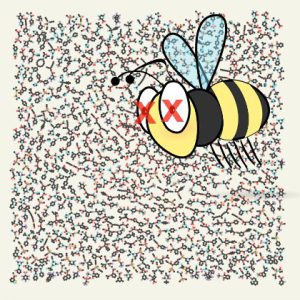
Researchers from the Oregon State University College of Engineering have applied artificial intelligence in the protection of bees from pesticide.
Cory Simon, Assistant Professor of Chemical Engineering, and Xiaoli Fern, Associate Professor of Computer Science oversaw the project which consisted of training a machine learning model to forecast whether any proposed insecticide, fungicide, or herbicide could be harmful to honeybees based on the molecular structure of the compound.
Their findings were published in the Journal of Chemical Physics in a special issue, ‘Chemical Design by Artificial Intelligence.’
This research is important because many plants rely on bee pollination. Without it, about 100 commercial crops in the US would cease to exist. The global economic impact of bees is estimated to be an annual 100 billion.
‘Pesticides are widely used in agriculture, which increase crop yield and provide food security, but pesticides can harm off-target species like bees,’ said Simon. ‘And since insects, weeds, etc. eventually evolve resistance, new insecticides must continually be developed, ones that don’t harm bees.’
Graduate students Adrian Henle and Ping Yang used data on honeybee toxicity from experiments on pesticide exposure involving about 400 different pesticide molecules. This data was used to train a machine learning algorithm to forecast the toxicity of a new pesticide molecule to honeybees.
‘The model represents pesticide molecules by the set of random walks on their molecular graphs,’ said Yang.
A random walk is a mathematical concept which describes any meandering path, like the complex chemical structure of a pesticide, where each step in the path is decided by chance.
Yang explains it as such: Imagine you’re on an aimless stroll along the chemical structure of a pesticide, moving from atom to atom through the bonds that keep the compound together. You move in random directions but keep track of your path, the sequence of atoms and bonds you meet. Then you go to a different molecule, and compare the movements to what you’ve done before.
‘The algorithm declares two molecules similar if they share many walks with the same sequence of atoms and bonds,’ said Yang. ‘Our model serves as a surrogate for a bee toxicity experiment and can be used to quickly screen proposed pesticide molecules for their toxicity.’
By Marvellous Iwendi.
Source: Oregon State University